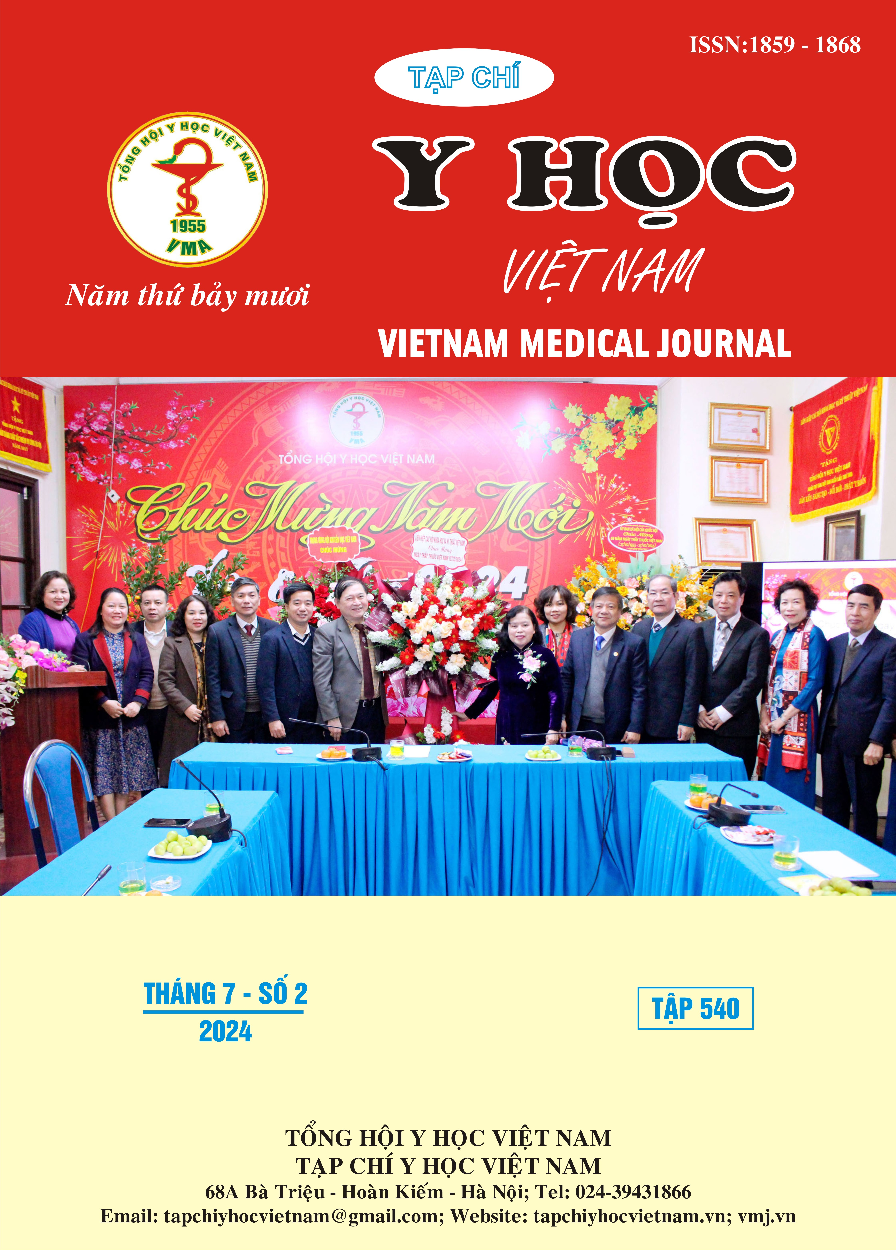RESULTS OF EXPANDABLE PEDICLE SCREW FIXATION FOR PATIENT WITH OSTEOPOROTIC THORACOLUMBAR FRACTURE AT VIET DUC HOSPITAL
Main Article Content
Abstract
Objectives: Evaluate the outcomes of expandable pedicle screw fixation for patient with osteoporotic thoracolumbar fracture. Objects and Methods: A longitudinal descriptive and prospective study on 31 patients underwent expandable pedicle screw fixation surgery due to osteoporotic thoracolumbar fracture Viet Duc Hospital from 01/2021 to 06/2022. Results: Among the 31 patients, female/male ratio = 1,8/1; with an average age of 65,6±7,2. All patients had symptoms of thoracolumbar pain (100%), mild to moderate neurological damage, mean preoperative VAS score of 7,1 ± 1,8 and ODI index of 70,8 ± 10,2 %. The average T-score for the sample patients were -3,2±0,7. The average vertebral Cobb angle (V-Cobb) was 27,2° ± 4,2°, and the preoperative fixed segment Cobb angle (S-Cobb) was 28,5° ± 5,5°. The mean surgical time was 69,7 ± 10,8 minutes, with an average blood loss of 300,5 ± 50,1 ml and the average hospital stay of 6,5 ± 2,8 days. Intraoperatively, dural tears accounted for 3,2%, Postoperative complications included surgical site infection in 3,2%. VAS and ODI scores at 1 and 6 months postoperatively significantly decreased with p<0.05. V-Cobb and S-Cobb postoperatively significantly decreased with p<0,05. Macnab quality of life scores at 6 months postoperatively showed good to excellent improvement in 90,4% of cases. Screw loosening rate was low at 1,6% and screw breakage rate was at 0,8%, no cases of rod fracture, pull-out screw postoperatively. Conclusion: The result of expandaple pedicle screw fixtation surgery for patient with osteoporotic thoracolumbar fracture achives good results and significant clinical improvement and spine alignment correction. The incidence of intraoperative complications and postoperative complications is low
Article Details
Keywords
expandable pedicle screw, osteoporotic thoracolumbar fracture
References
2. Đỗ Mạnh Hùng (2018), “Nghiên cứu ứng dụng tạo hình đốt sống bằng bơm cement có bóng cho bệnh nhân xẹp đốt sống do loãng xương”. Luận văn tiến sĩ y học
3. Vaidya Govindarajan, et al. “Osteoporosis treatment in patients undergoing spinal fusion: a systematic review and meta-analysis”. Neurosurg Focus Volume 50. June 2021
4. Wu Z.-X., Gong F.-T., Liu L., Ma Z.-S., Zhang Y., Zhao X., Yang M., Lei W., Sang H.-X. A comparative study on screw loosening in osteoporotic lumbar spine fusion between expandable and conventional pedicle screws. Arch. Orthop. Trauma Surg. 2012;132:471–476. doi: 10.1007/s00402-011-1439-6
5. Koller H., Zenner J., Hitzl W., Resch H., Stephan D., Augat P., Penzkofer R., Korn G., Kendell A., Meier O., et al. The impact of a distal expansion mechanism added to a standard pedicle screw on pullout resistance. A biomechanical study. Spine J. 2013;13:532–541. doi: 10.1016/j.spinee.2013.01.038.
6. Vishnubhotla S., McGarry W.B., Mahar A.T., Gelb D.E. A titanium expandable pedicle screw improves initial pullout strength as compared with standard pedicle screws. Spine J. 2011;11:777–781. doi: 10.1016/j.spinee.2011.06.006.
7. Jong Hun Seo, Chang Il Ju, Seok Won Kim, Jong Kyu Kim, Ho Shin. “Clinical efficacy of bone cement augmented screw fixation for the severe osteoporotic spine”. Korean Journal of Spine 2012;9(2):79-84
8. Vikas Tandon, Kalyan Kumar Varma Kalidindi, et al. “A prospective study on the feasibility, safety, and efficacy of a modified technique to augment the strength of pedicle screw in osteoporotic spine fixation”. Asian Spine Journal 2020;14(3):357-363.


